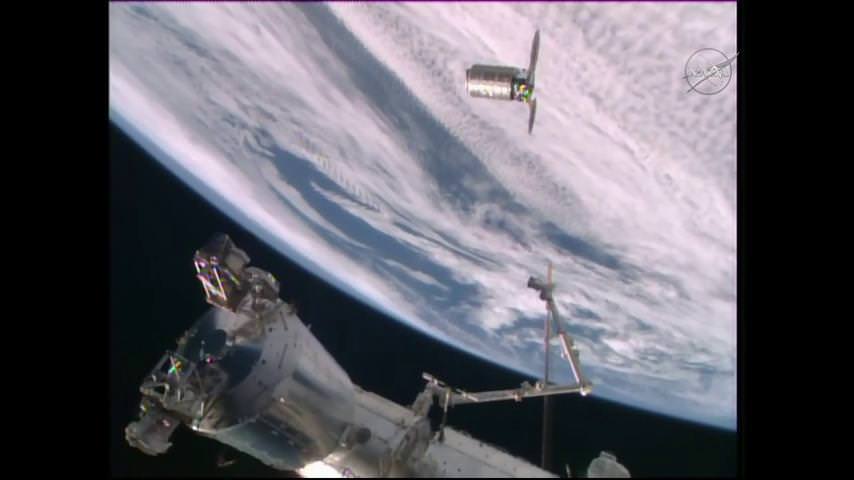
Story/photos updated
The commercial Cygnus cargo spaceship, loaded with over three tons of critically needed supplies and research experiments, successfully rendezvoused and docked with the International Space Station (ISS) this morning (Dec. 9) after blazing to orbit on Sunday, Dec. 6, and thereby successfully resumed the American resupply chain to orbit – just in time for Christmas in Space!
The Orbital ATK Cygnus CRS-4 resupply vessel arrived in the vicinity of the massive orbiting outpost around 530 a.m. EST today with pinpoint accuracy after precisely firing its maneuvering thrusters to home in on the complex during a two day orbital chase.
After moving close in to the station, NASA astronaut Kjell Lindgren deftly grappled the Cygnus – named the “S.S. Deke Slayton II” – with the space stations 57.7-foot-long (17.6- meter-long) robotic arm, Canadarm2, at 6:19 a.m. EST, while operating the arm from a robotics work station inside the seven windowed domed cupola.
The entire sequence was broadcast live on NASA TV.
Lindgren was assisted by NASA astronaut and current ISS Commander Scott Kelly, who is spending a year in space as part of the first ‘1 Year ISS Crew’ with Russian cosmonaut Mikhail Kornienko.
The arm was then used to install the “S.S. Deke Slayton II” into place on the stations Earth-facing port of the Unity module at 9:26 a.m. EST.
Cygnus thus became the first cargo ship to be berthed at that Earth-facing port on Unity.
“#Cygnus, AKA #SSDekeSlayton has arrived just in time for #Christmas! #YearInSpace,” tweeted Scott Kelly.
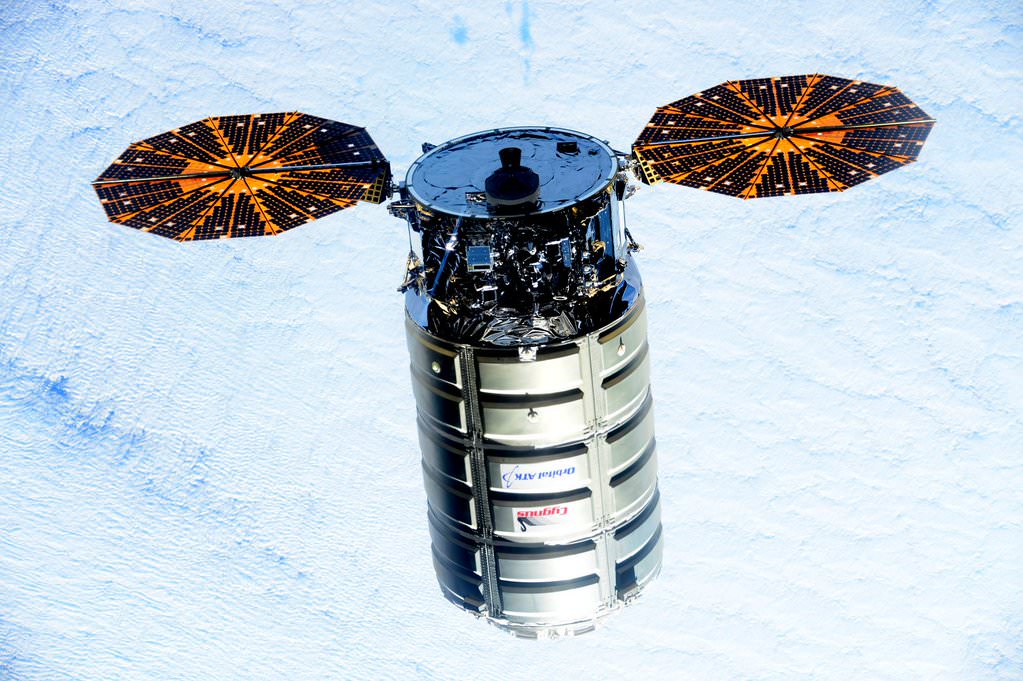
The Orbital ATK Cygnus CRS-4 cargo freighter was carried to space on a United Launch Alliance (ULA) Atlas V rocket and which successfully restarted American’s critically needed cargo missions to the ISS following a pair of launch failures by Orbital ATK and SpaceX over the past year. It marked the first successful US cargo delivery mission in some 8 months and is packed with Christmas presents for the crew.
The ULA Atlas V rocket roared off the launch pad at 4:44 p.m. EST at the opening of a 30 minute launch window from Space Launch Complex 41 at Cape Canaveral Air Force Station in Florida.
“It’s great to be back in space and have Cygnus up there,” Frank Culbertson, President of Orbital ATK’s Space System Group, told Universe Today.
“Every launch is exciting and we have the team working on what we are committed to doing.”
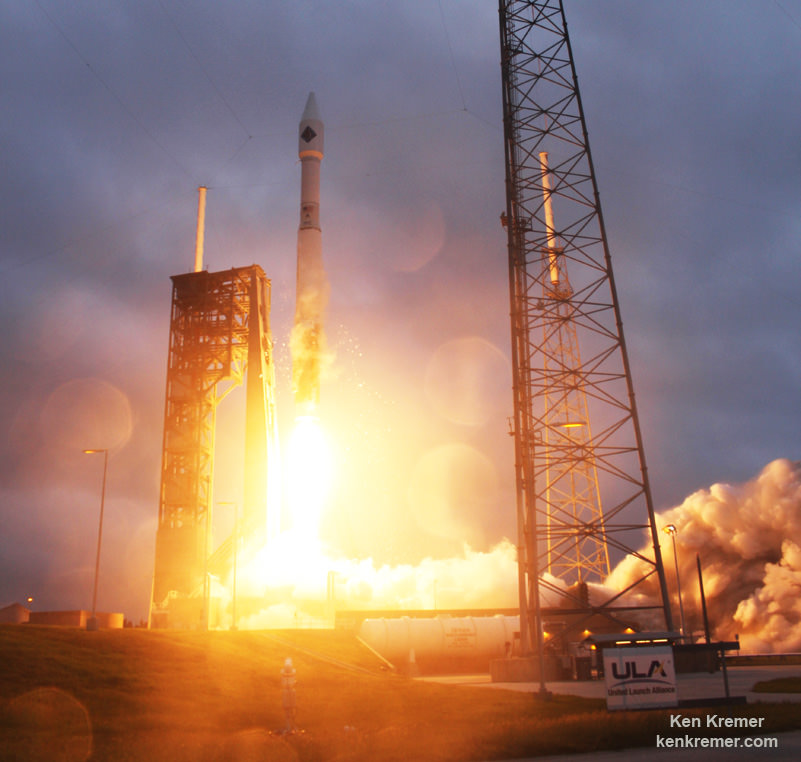
The launch took place under gloomy Florida skies on the fourth try following of trio of scrubs forced by heavy downpours and blustery winds sweeping through the ‘sunshine’ state as I watched from the roof of the Vehicle Assembly Building (VAB) at KSC.
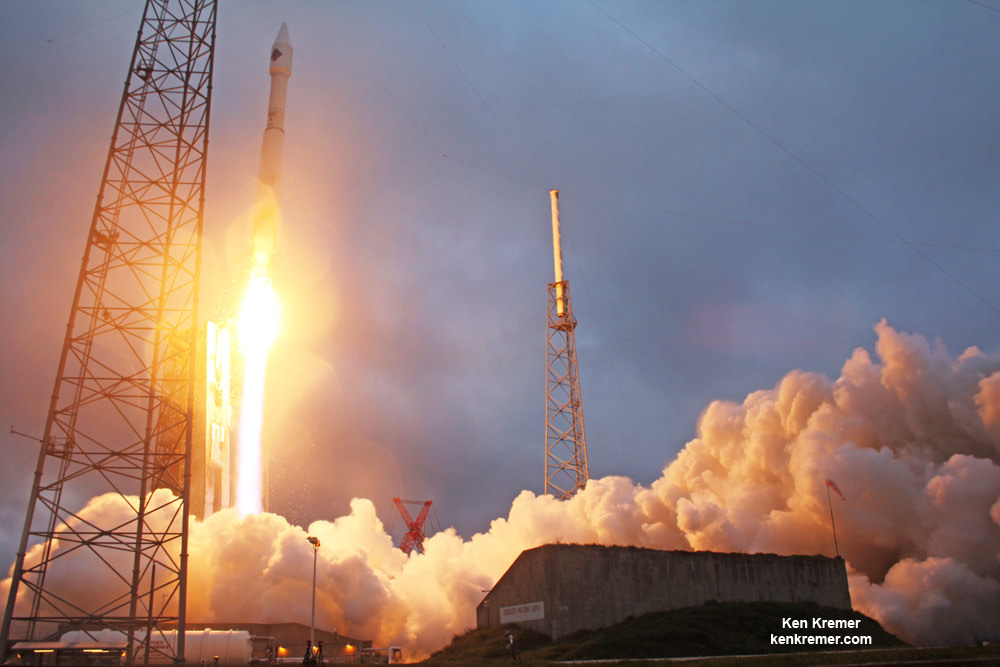
The launch failures of the Orbital ATK Antares Orb-3 on Oct 28, 2014 and SpaceX Falcon 9 Dragon on June 28, 2015 forced a cargo resupply launch hiatus until the root causes of the mishaps are fully resolved.
It’s critical that the resupply flights from Orbital ATK and rival SpaceX resume because they are the essential lifeline to the station, without which it cannot exist. The cargo missions stock the station with all manner of equipment, science experiments, food, clothing spare parts and gear for the international crews of six astronauts and cosmonauts.
“So we are trying to get some US specific items, that were critically lost on both flights, back up to the station with this flight now,” Dan Tani, a former astronaut who is now Orbital ATK’s vice president for Mission and Cargo Operations, told Universe Today.
The Cygnus CRS-4 supply ship is carrying over 7000 pounds of science and research, crew supplies and vehicle hardware to the orbital laboratory. This will support dozens of the approximately 250 science and research investigations that will occur during Expeditions 45 and 46, says NASA.
“Science payloads aboard Cygnus will offer a new life science facility that will support studies on cell cultures, bacteria and other microorganisms; a microsatellite deployer and the first microsatellite that will be deployed from the space station; and experiments that will study the behavior of gases and liquids, clarify the thermo-physical properties of molten steel, and evaluate flame-resistant textiles.”
“Cygnus also will deliver replacement cargo items including a set of Microsoft HoloLens devices for use in NASA’s Sidekick project, a safety jet pack astronauts wear during spacewalks known as SAFER, and high pressure nitrogen and oxygen tanks to plug into the station’s air supply network.”
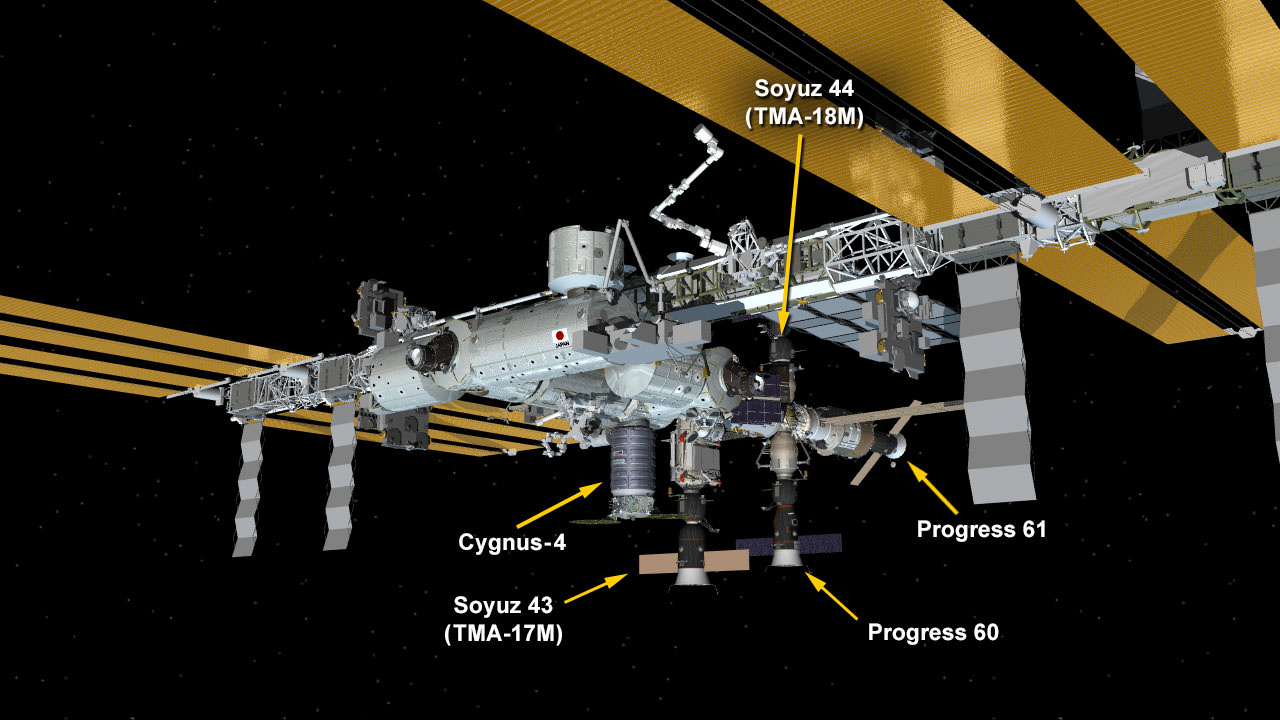
The current six person station crew is expected to open the hatch to Cygnus tomorrow, Thursday, Dec. 10, and start unpacking all the goodies including Christmas presents from Earth after making leak checks and confirm safe operations.
The spacecraft will remain joined to berthed at the station for at least a month before detaching and conducting a destructive re-entry into Earth’s atmosphere sometime in January 2016. It will be loaded with some 3,000 pounds of trash for disposal on return to free up storage space for the crew.
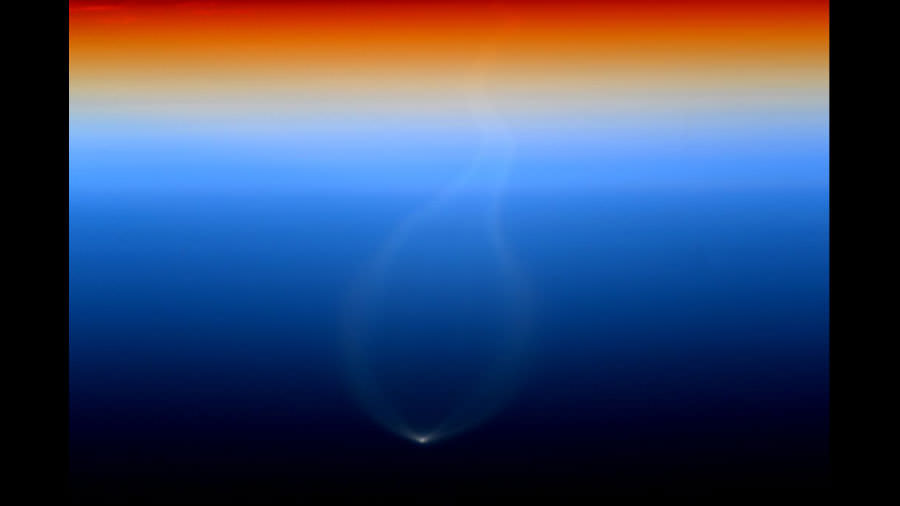
The launch of the privately developed Orbital ATK Cygnus spacecraft began the company’s fourth operational cargo resupply mission, named CRS-4, under a commercial resupply services (CRS) contract to NASA.
Cygnus is named the ‘SS Deke Slayton II’ in memory of Deke Slayton, one of the America’s original seven Mercury astronauts. He was a member of the Apollo Soyuz Test Flight. Slayton was also a champion of America’s commercial space program.
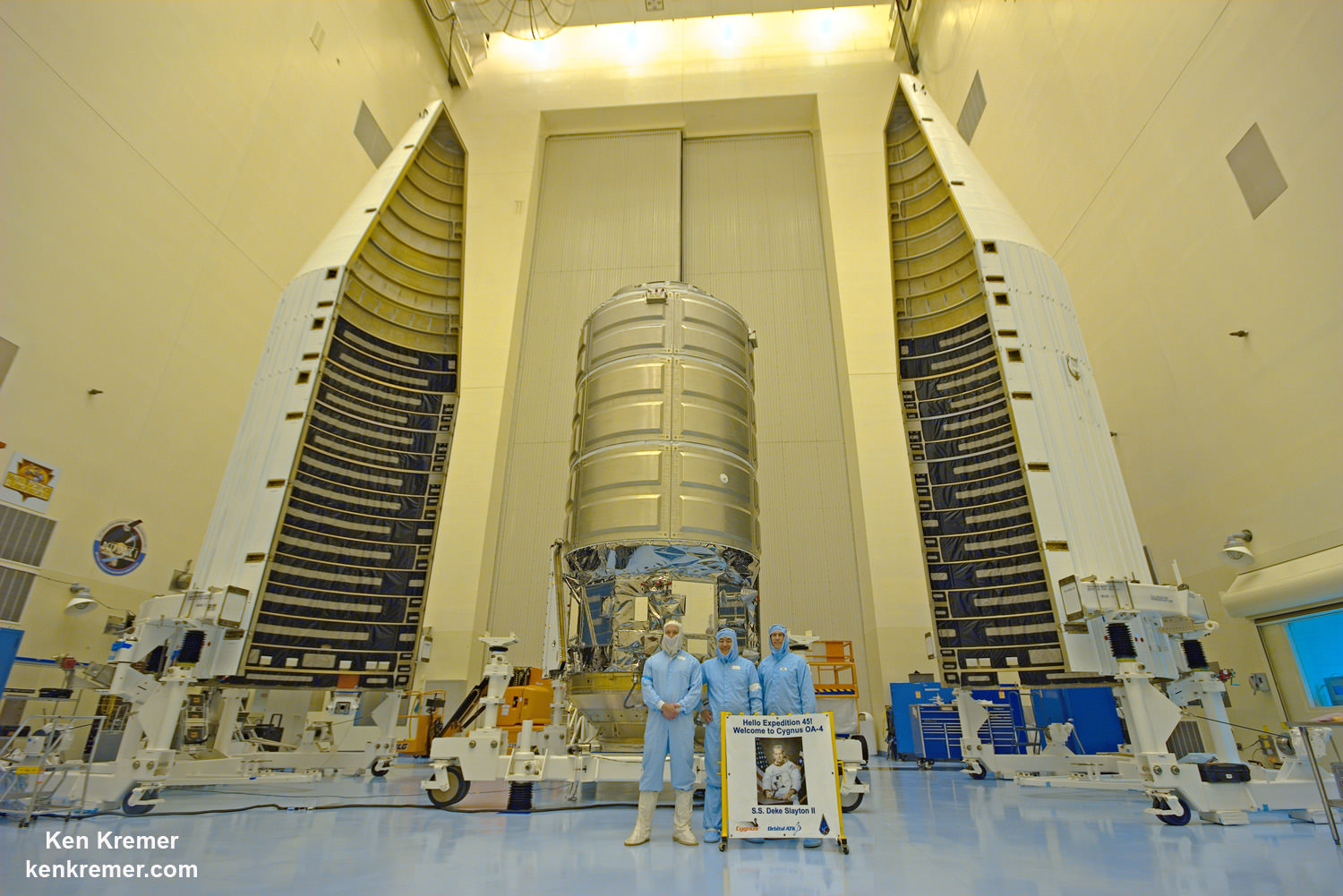
CRS-4 counts as the first flight of Cygnus on an Atlas and the first launch to the ISS using an Atlas booster.
This is also the first flight of the enhanced, longer Cygnus, measuring 5.1 meters (20.5 feet) tall and 3.05 meters (10 feet) in diameter, sporting a payload volume of 27 cubic meters.
“The enhanced Cygnus PCM is 1.2 meters longer, so it’s about 1/3 longer,” Frank DeMauro, Orbital ATK Vice President for Human Spaceflight Systems Programs, said in an exclusive interview with Universe Today.
This Cygnus is also carrying its heaviest payload to date since its significantly more voluminous than the original version.
“It can carry about 50% more payload,” DeMauro told me.
“This Cygnus will carry more payload than all three prior vehicles combined,” Tani elaborated.
The total payload packed on board is 3513 kilograms (7745 pounds), including science investigations, crew supplies, vehicle hardware, spacewalk equipment and computer resources.
Among the contents are science equipment totaling 846 kg (1867 lbs.), crew supplies of 1181 kg (2607 lbs.), and spacewalk equipment of 227 kg (500 lbs.).
Orbital ATK holds a Commercial Resupply Services (CRS) contract from NASA worth $1.9 Billion to deliver 20,000 kilograms of research experiments, crew provisions, spare parts and hardware for eight Cygnus cargo delivery flights to the ISS.
Orbital ATK has contracted a second Cygnus to fly on an Atlas in March 2016 on the OA-6 mission.
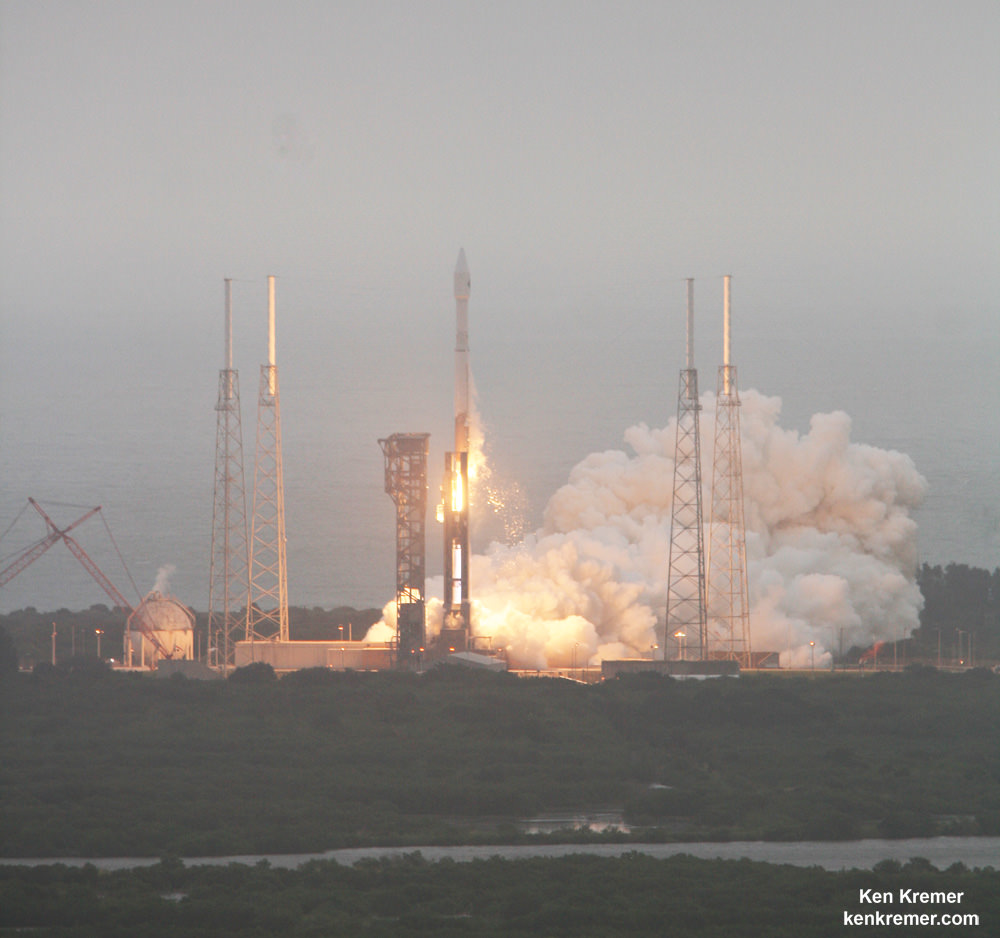
NASA has also contracted with Orbital ATK to fly three additional missions through 2018.
On Friday, Lindgren will be departing the station and returning to Earth along with two crewmates in a Soyuz capsule to complete his 141 mission.
Stay tuned here for Ken’s continuing Earth and planetary science and human spaceflight news.

An early Christmas gift for the ISS crew! I’ll bet that feels pretty dang good! Mmmm.. fresh fruit, vegtables and oxygen! Sweet!